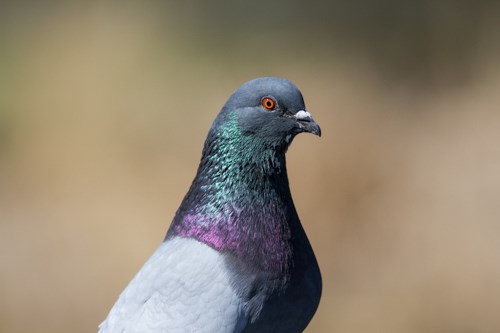
NPS/Gordon Dietzman IntroductionThis dove has many common names: pigeon, rock dove, rock pigeon, racing pigeon, homing pigeon, domestic pigeon, among others, but rock pigeons are actually doves. (Commonly, the word "pigeon" is used with the larger doves while the term "dove" is usually reserved for the smaller and more delicate birds of this group. Scientifically, however, the word "pigeon" has little significance.) Rock pigeons originated in the Old World north of the equator, but were brought to North America in 1606 and are now widely spread across the continent. This familiar bird inhabits our cities, where they can sometimes become pests by leaving droppings in city parks and downtown streets. Still, they are handsome birds and have long had a relationship with humans who have used them for food (squab), to carry messages (carrier pigeons), and for recreation (homing pigeons and the breeding of fancy pigeons). Rock pigeons are common in both urban areas and farmlands of the Mississippi National River and Recreation Area. In downtown areas, rock pigeons nest on tall buildings and are the preferred prey of the speedy peregrine falcons. Fascinating Facts
Identification
| |
Last updated: April 2, 2019
